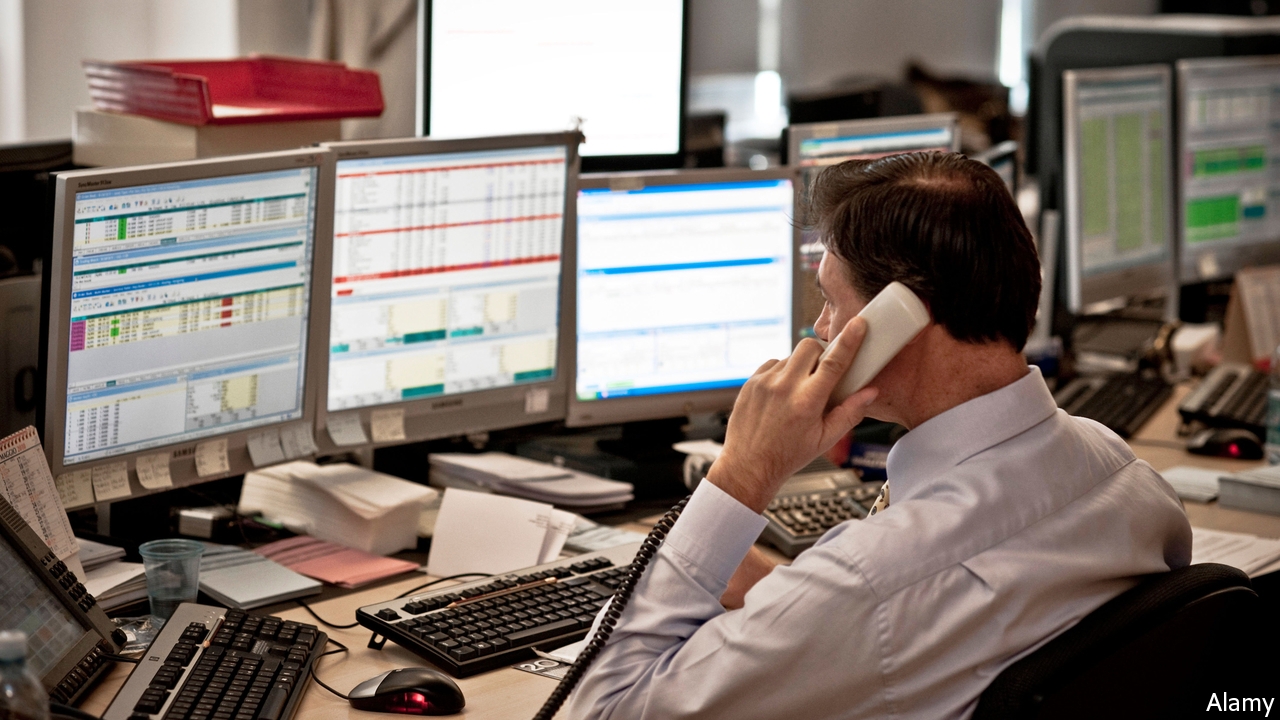
![]() Buying into the corporate bonds market still requires calling an investment dealer’s trading desk most of the time, which has remained unchanged for several decades.
Buying into the corporate bonds market still requires calling an investment dealer’s trading desk most of the time, which has remained unchanged for several decades.
Source: The Economist
Manual trading has all but disappeared in much of finance. Most stock exchanges no longer have shouting floor traders; anyone from retail investors to the largest asset managers can buy and sell shares through easy, automated, electronic systems. The derivatives markets are even further along: for some types, nine-tenths of volume is traded electronically. Yet more than 80% of corporate bonds trading still happens over the phone. Why does buying into the corporate bond market, a $50trn market globally, with $1.5trn in issuance last year in America alone, still require calling up a trading desk most of the time?
The corporate bond market has certain unique characteristics that make it different. A firm typically issues at most two types of shares (common and preferred), but may have dozens of bonds outstanding that differ by maturity, issue date and the degree of seniority in the firm’s capital structure. Given the dizzying variety of bonds, any individual one is traded only rarely. In fact, 90% of corporate bonds trade fewer than five times a year.
The traditional way to overcome this illiquidity has been through trading desks at investment banks, who act as market-makers. They name their price, buy up bonds from interested sellers, and hold them as inventory on their balance-sheet until a buyer comes along. This dealer-based system, relying on personal relationships, has remained unchanged for several decades; the phone calls have therefore persisted as well. Indeed, looking just at phone trades understates the continuing importance of dealers. Even of the 20% of trading that is electronic, nearly all takes place on so-called “request-for-quote” platforms where dealers are still the only ones with the right to quote prices, and to buy or sell.
Change is coming, but slowly: the regulatory requirement to report prices of completed transactions, starting in Europe from January 2018, and already in place in more limited form in America, has helped bring some transparency. But most of the evolution is technological. Some platforms, like MarketAxess, have set up “all-to-all” trading, which allows any participant on a network, such as an asset manager, to trade directly with any other one, bypassing dealers. Others, like Algomi, have come up with products that help keep track of interest in buying and selling over time, allowing dealers to move from risk-taking to matchmaking. If these technologies catch on at a large scale, expect few phone calls with trading desks.


